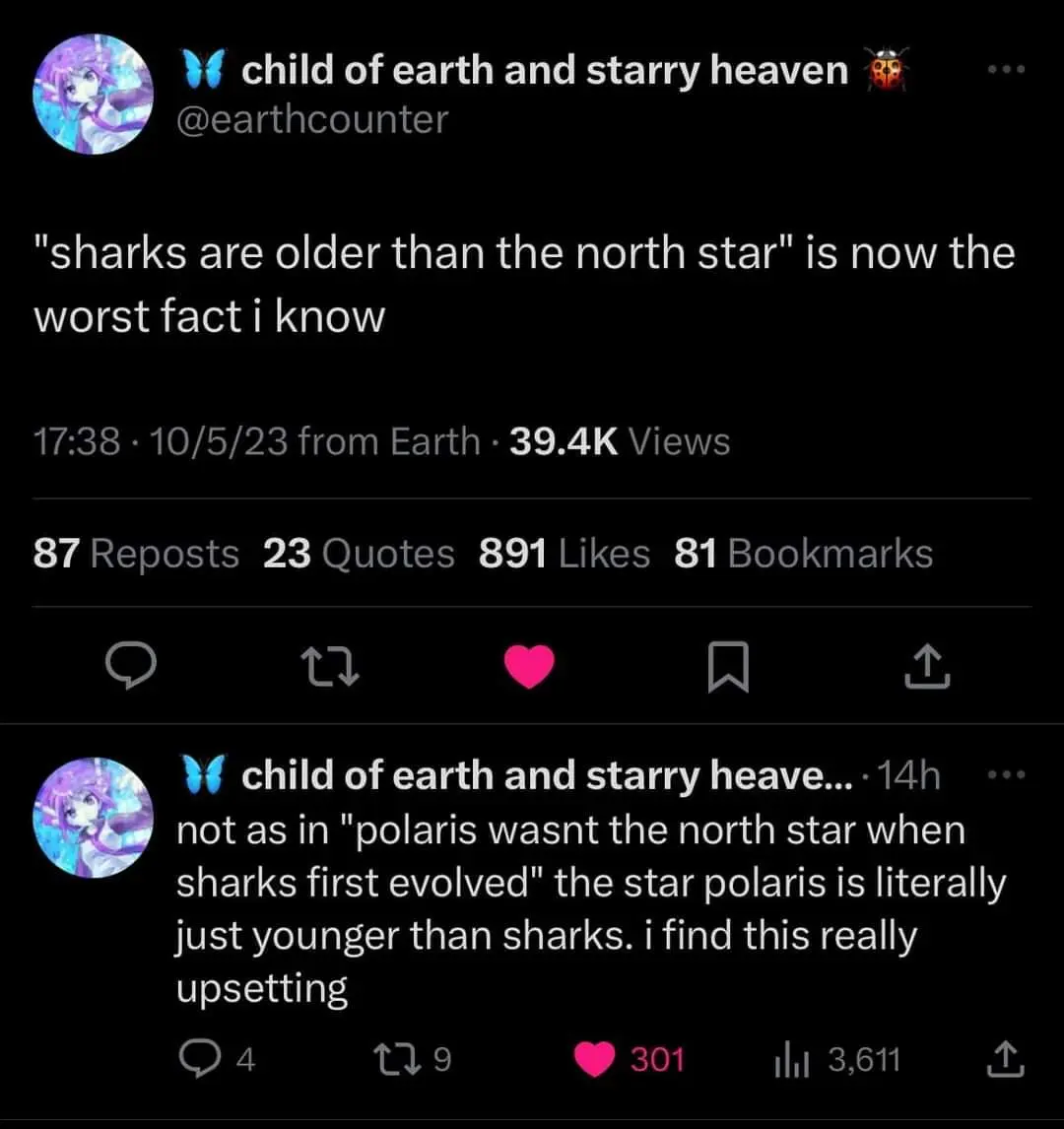this post was submitted on 08 Nov 2023
659 points (100.0% liked)
196
16500 readers
2699 users here now
Be sure to follow the rule before you head out.
Rule: You must post before you leave.
founded 1 year ago
MODERATORS
you are viewing a single comment's thread
view the rest of the comments
view the rest of the comments

It is partly true. Polaris is in fact a triple star system. The youngest of the three stars (Polaris Aa) is indeed younger than sharks at between 45 and 67My old. It is in tight orbit with Polaris Ab which is 500My old, and Polaris B which is 1.5By old and a little bit farther away. Here’s a pic from Hubble:
https://en.m.wikipedia.org/wiki/File:Polaris_alpha_ursae_minoris.jpg
I feel cheated that the north star is in fact 3 stars.
Me too. It’s a sick fact. Sharks are still older than trees tho…
This cannot be true.
Oh. https://www.smithsonianmag.com/smart-news/respect-sharks-are-older-than-trees-3818/
This should not be true.
Happens a lot. Sometimes a "star" is actually a whole galaxy.
Fun fact: the morning Star (first star we see in the morning) is in fact also the evening star (first Star we see in the evening). It's also not a star; it's just Venus.
ok lucifer
what a rollercoaster.
I think it’s also worth mentioning that Polaris Aa, the youngest star in the triplet, is also the brightest by 3 orders of magnitude. Without Polaris Aa, we wouldn’t actually consider it as the North Star at all…so I think you are safe to continue using this as a fact.
Go blow some people’s minds, everyone!
I want to know how three stars can form as a system at very different times. Shouldn't they have similar ages?
My understanding is that, on a cosmic scale, these timeframes are not tremendously different!